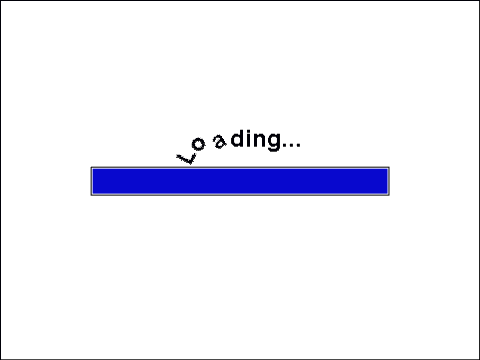Si tu sitio web no está atrayendo los clientes que quisieras y tienes poco tráfico, puede deberse a dos razones: necesita optimización para buscadores (SEO) o una actualización completa.
¿Cuándo necesita ser rediseñado tu sitio web? Cuando tienes:
1. Diseño gráfico anticuado. Si tu sitio tiene imágenes GIF animadas y texto con efectos estilo WordArt, estás demostrando a tus visitantes que tu empresa quedó estancada en el siglo pasado o no te importa la presencia de tu marca en Internet.

(Imagen: Smith and Goldsmith Inc.).

(Imagen: ABBC Breeders).
2. Gráficos que distraen la atención y demasiados anuncios. Cada elemento gráfico de tu sitio debe reforzar el contenido y no competir con él o confundir a los visitantes. Recuerda que en la Web 2.0 el contenido de calidad es lo que genera visitas.

(A menos que seas Ling Valentine, tener un sitio así no te funcionará. Imagen: Ling’s Cars).
3. Texto difícil de leer. Esto puede deberse a que utilizaste tamaños de fuente muy pequeños o muy grandes, o que el color del texto dificulte la lectura (por ejemplo, letras en blanco sobre fondo negro).

(Imagen: Party Tent City).
4. Animaciones Flash. Además de hacer que tus páginas tarden en cargarse, los dispositivos de Apple no los reproducen y por lo tanto sus usuarios no podrán ver tu sitio.

5. Audio o video que se reproduce automáticamente. Pocas cosas son de tan mal gusto como reproducir video, música, voz o sonidos sin previa autorización por parte del visitante. Esto generalmente hace que se moleste y no vuelva a tu sitio.
6. Faltas ortográficas. Esto da la impresión de que no prestas atención a los detalles y eso es precisamente lo que tus clientes buscan.
7. No hay llamadas a acción claras. Al igual quen en los envíos masivos de correo electrónico, debes dejar en claro lo que quieres que tu visitante haga en tu sitio, mediante botones y links que inciten a dar clic.

Este es un buen uso de botones que llaman a acción. (Imagen: Dropbox).
8. Información desactualizada. Si tienes una sección de noticias, galería de fotos o un blog, debes asegurarte que sea actualizado periódicamente. Si no ofreces algo nuevo y de valor a tus usuarios, sentirán que no vale la pena consultar tu sitio web.
9. No hay enlaces a medios sociales. Debes tener un botón que conecte con las cuentas de Facebook, Twitter, LinkedIn, Google+ o Instagram de tu empresa para continuar con la interacción que generará valor a tu marca.

(Imagen: Ecolohosting).
¿Alguno de estos puntos describe tu sitio? Entonces es hora de que escribas a tu proveedor de diseño web o consigas uno que pueda ofrecerte las herramientas más recientes para que tu negocio prospere en Internet.
Por cierto, si tu sitio web tiene un carrito de compra, aquí te presentamos 10 consejos para hacer comercio electrónico efectivo.
Fuente: Host Gator
If your website has low traffic, it may be because of two reasons: it needs search engine optimization (SEO) or a makeover altogether.
How do you know if your website needs to be redesigned? If it has:
1. Graphic design that looks outdated. If your site still has GIF animations and WordArt-style text, you’re sending the wrong message. It will look like your company got stuck in the 20th Century and you just don’t care about your brand presence on the web.

(Image: Smith and Goldsmith Inc.).

(Image: ABBC Breeders).
2. Distracting graphic elements and too many ads. Each graphic element should work at the service of content and not compete with it. Remember that quality content is what drives today’s Internet consumer.

Unless you are Ling Valentine, THIS will NEVER work. (Image: Ling’s Cars).
3. Hard-to-read text. Your site may have font sizes too small or too big. The font color may also make it hard to read (e.g. white text over a black background).

(Image: Party Tent City).
4. Flash animations. Besides slowing your site’s loading time, Apple devices don’t run Flash. Can you do without iPhone, iPad, iPod and Mac users

5. Autoplay. If you really want to upset your visitors, one of the best ways to do it is by playing video and audio clips as they enter your site. Do this and they’ll never come back.
6. Grammar errors. This will tell your visitors that you just don’t pay attention to details. That is precisely what customers want from you.
7. No clear call-to-action buttons. Same as with e-mail marketing, you must state clearly what is it that you want your visitors to do when they land on your site.

This is a good use of call-to-action buttons (Image: Dropbox).
8. Outdated information. If you have a news section, photo gallery or blog, you must make sure they are constantly updated. If you don’t offer something new and valuable to your users, they won’t think your site is worth the visit.
9. No social links to social media. You must have easy-to-find links to your social media profiles, such as Facebook, Twitter, LinkedIn, Google+ or Instagram, to continue with your brand interaction.

(Image: Ecolohosting).
Does any of these poins describe your website? Then it’s time you e-mailed your web designer or found a reliable provider. Someone who can get you the new tools to make your business bloom in the Internet.
For instance, if your site has a shopping cart, here are 10 tips for effective e-commerce.
Source: Host Gator























